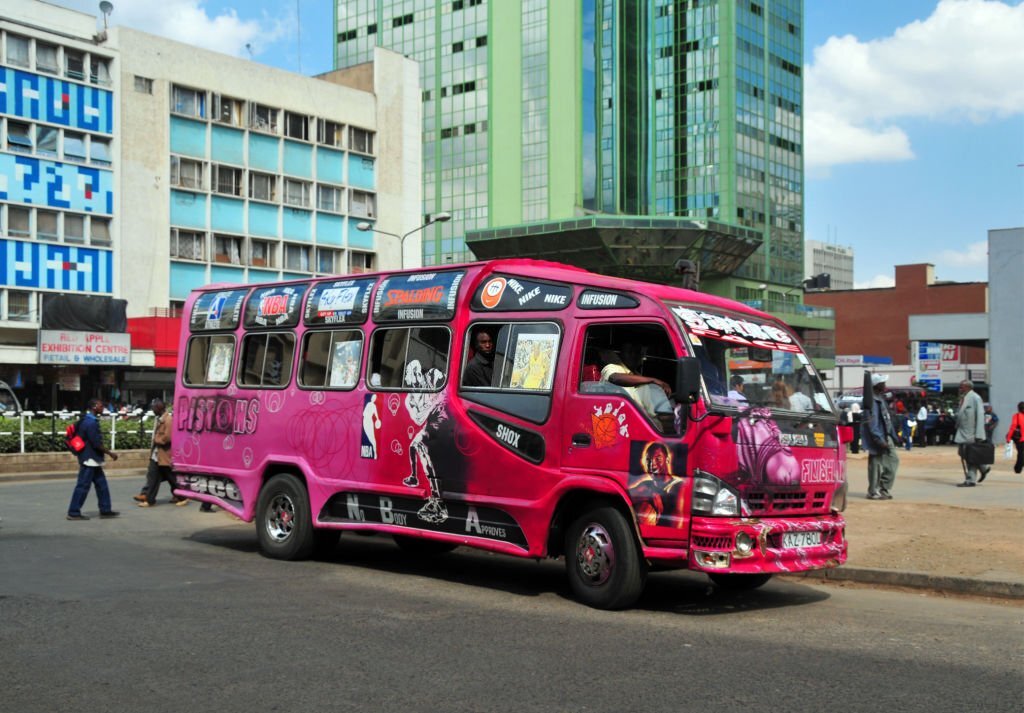
Matatu culture in kenya
The majority of Nairobi, the capital of Kenya, is served by Matatus, public transportation minibuses.
They swarm the streets of Nairobi, Kenya, with music booming as they bounce and weave through traffic. Some youngsters refer to them as “Club on wheels,” while others refer to them as “Museum on wheels.”
Each Matatu is louder than the last, with onboard entertainment, custom decorations, colorful lighting, and graffiti-style artwork to attract the younger passengers’ attention.
Although they are the preferred means of transportation for the majority of Kenyans, matatus are inexpensive, practical, and occasionally a little hectic. However, government restrictions and other modes of public transportation may soon put the matatu culture in danger.
Nairobi is a city of moving art.
The patterns of matatus are varied and include hip-hop musicians, international musical stars, athletes, political figures, and even religious symbols. These minibuses play local music and support emerging Kenyan artists, much like mobile local radio stations.
Nairobi is a city ruled by the youth, therefore when you see the Matatus and the art, you truly understand Nairobi.
Nairobi’s streets are brightened up by Matatu minibuses, which also offer residents a quick, alternate form of transportation.
Owners of matatus must spend a lot of money to ensure that their minibuses are of the highest caliber in order to outperform the competition and draw customers.
advantages of taking a matatu over other types of public transportation;
Less traffic delays; unlike other public transportation companies, matatus are exceptionally quick to avoid traffic jams in Nairobi, the capital of traffic jams in East Africa.
Matatus are popular with young people who enjoy listening to loud music while traveling, and all of them include large bass speakers to accommodate this.
All passengers on Matatus have access to free WiFi, allowing young people to use Facebook or WhatsApp in congested traffic without utilizing their personal data plans.
On the large flat television screens, Matatus provides visual entertainment such as movies and music videos.
Comfortable seats; all Nairobi Matatus feature comfortable seats.
For a minibus to be considered a Matutu, it must:
Graffiti is painted in a stylish manner on the body’s outside.
loud bass speakers for music
adequate seating
Internet access via WiFi for all occupants
Flat-screen television for viewing movies, news, or music videos by passengers
CCTV cameras to keep an eye on the Matatu’s security
“The Flash” is one of the hottest Matatus around. This stylish car boasts a flat screen TV inside, free onboard WiFi, and a clean paint job.
A new vehicle’s construction and modification, which are primarily done by hand and by local mechanics, can cost upwards of $20,000.
Every matatu is made totally from scratch, typically from a freshly disassembled truck’s chassis. The panels are then attached after the bones have been welded. Once the vehicles are prepared as a blank canvas, matatu artists decorate them with bold designs, hand-painted portraits, and graffiti.
Matatu minibuses have designs painted on them or added to them that reflect Nairobi’s urban youth culture.
Do you believe that these changes are necessary for attracting and ensuring the comfort of passengers using Africa’s public transportation system?
Which other African cities have implemented these advancements in public transportation?




